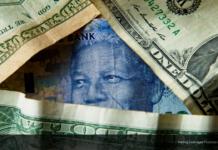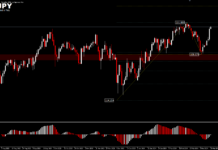China is Australia’s most important trading partner and being the most important destination for Australian exports, any deterioration in this relationship could have a significant negative impact on Australia’s potential foreign exchange earnings.
The Australian Dollar edged higher against the USD in the European session on Monday, after a previous move broke 0.7000 psychological support and hit its lowest since July 20 at 0.6991. The Aussie fell 1.5% last week, driven by global risk aversion in the new lockdown and increasing uncertainty over the US Presidential Election.
News that China wants to escalate a trade war with Australia could weigh on the long-term outlook for the Australian Dollar, however short-term price movements in the currency were still positive at the start of this week, as it enters a busy week where all eyes are on the US election.
South China Morning Post reported on Monday that China had banned timber imports from Queensland and shipments of barley from other Australian grain exporters, with copper and sugar following this week. The newspaper reported Australian rock lobster shipments were also delayed in Shanghai at the weekend.
Officially, the ban is linked to biohazards: a Chinese foreign ministry spokesman confirmed to the South China Morning Post on Monday that Chinese authorities have repeatedly encountered biohazards in Australian timber imports. China’s customs agency also said it had found contamination in barley shipments from Australian grain exporter Emerald Grain and had stopped imports from the company starting Friday. The contamination came from bromus rigidus, a type of weed. Beijing has already moved to ban imports of Australian coal and cotton. These commodities are fungible, and total export demand for these Australian goods is not likely to be impacted.
China has in the past cited technical breaches as an excuse for banning agricultural products, but political analysts say this is a technical cover for political decisions. Indeed, it remains unclear why copper imports are facing restrictions, confirming suspicions that the move is politically motivated. China has rejected Australian calls to lift tariffs on barley imports and the SMCP reported that copper and sugar imports could be banned this week which does not bode well for AUD, and this may be a retaliatory measure against Huawei.
Equities, commodity prices and risk assets such as the Australian, New Zealand and Canadian Dollars have strengthened so far, as investors anticipated Joe Biden’s victory in the US presidential election due on Tuesday.
Meanwhile, this morning RBA cut its key interest rate to 0.1% from 0.25%, as widely expected. AUD initially dropped across the board after the RBA announcement. The RBA stepped up stimulus to ensure recovery. As expected, Australia’s RBA announced a package of measures designed to secure a rapid recovery from the crisis now that lockdowns have lifted. It also announced that it will buy AUD 100 bln of government bonds with maturities of around 5-10 years over the next six month.
However, RBA chief Lowe tried to calm speculation of negative rates, by saying that he sees no appetite to go into negative rates. The central bank head sent a pretty clear signal that with today’s moves on rates, the focus now has shifted to asset purchases, with no appetite at the central bank to move into negative rate territory. Lowe signalled that if necessary, the bank could extend asset purchases to beyond the 5-10 year area that is targeted now and that there is sufficient firepower to act again, although he also stressed that it is too early to say if that would be needed. The RBA chief suggested that global studies show bond program at 5% of GDP works best. He also stressed that the recession is not over yet and that the currency was one reason behind today’s decision to cut the key rate to 0.1% and the deposit rate to zero – but not the only one. A focus on lowering refinancing costs then and comments from Governor Lowe also suggest that the bank hopes to keep a lid on the exchange rate with the message, while “supporting asset prices and balance sheets”.
The Aussie subsequently recovered losses and AUDUSD was showing a 0.2% gain at its 0.7071 rebound high, having lifted out of the 0.7028 low. RBA Governor Lowe inspired some buying of the currency. As of AUDNZD, after successive AUD strengthening against NZD starting March at the low of 0.9993 near the perfectly round figure of 1.0000 to the peak of 1.1042, which means that a gain of 1049 pips has been recorded or the equivalent of 10.49% the AUDNZD pair has experienced a correction of more than 38.2% fib close to the support zone 1.0564, where last week only recorded low prices at 1.0591. The resistance level is around the price 1.0720. The decline is still a corrective wave, which has made 3 descending waves and 2 correcting waves. The bias is still showing a decline intraday, but refers more to consolidation as long as immediate support holds.
Click here to access the Economic Calendar
Andria Pichidi and Ady Phangestu – Market Analyst
Market Analyst
Disclaimer: This material is provided as a general marketing communication for information purposes only and does not constitute an independent investment research. Nothing in this communication contains, or should be considered as containing, an investment advice or an investment recommendation or a solicitation for the purpose of buying or selling of any financial instrument. All information provided is gathered from reputable sources and any information containing an indication of past performance is not a guarantee or reliable indicator of future performance. Users acknowledge that any investment in Leveraged Products is characterized by a certain degree of uncertainty and that any investment of this nature involves a high level of risk for which the users are solely responsible and liable. We assume no liability for any loss arising from any investment made based on the information provided in this communication. This communication must not be reproduced or further distributed without our prior written permission.




















